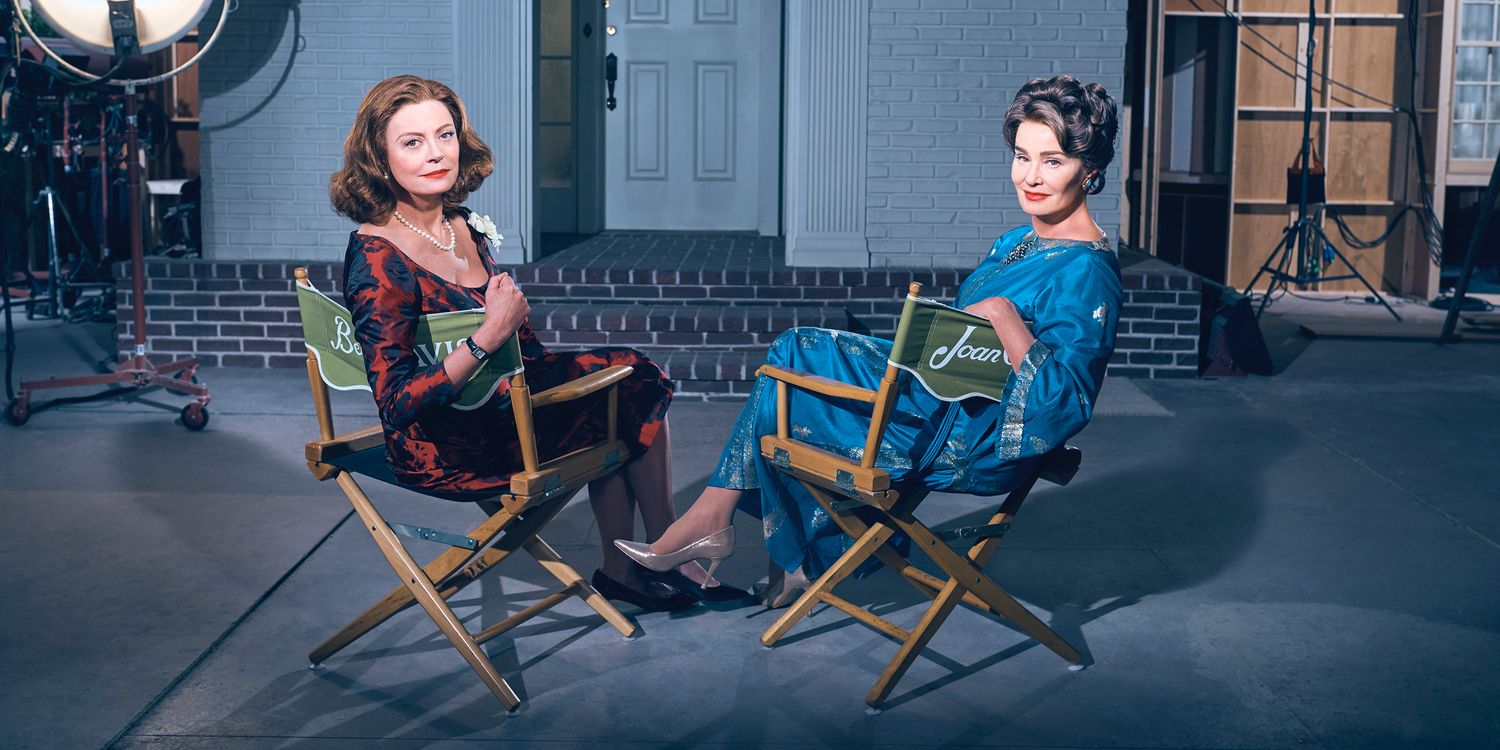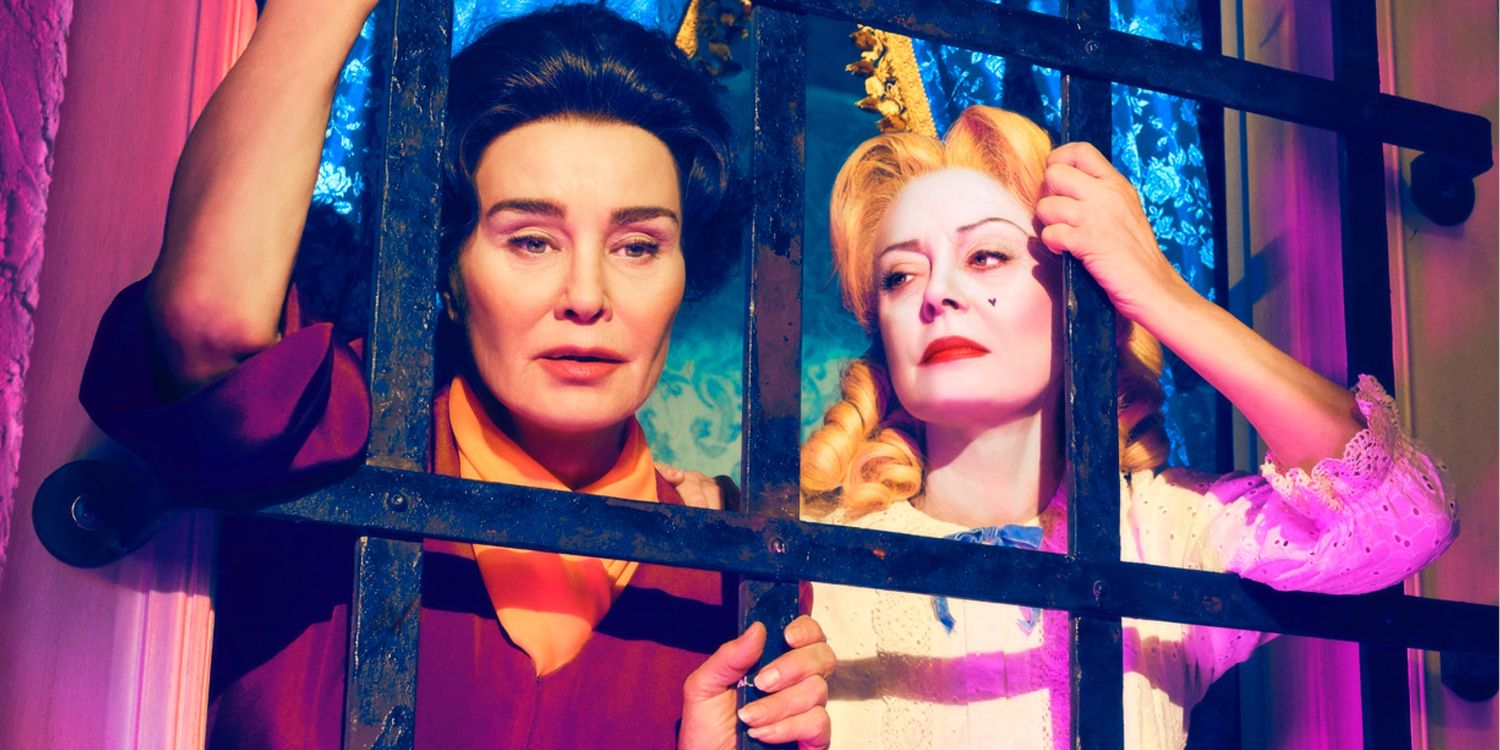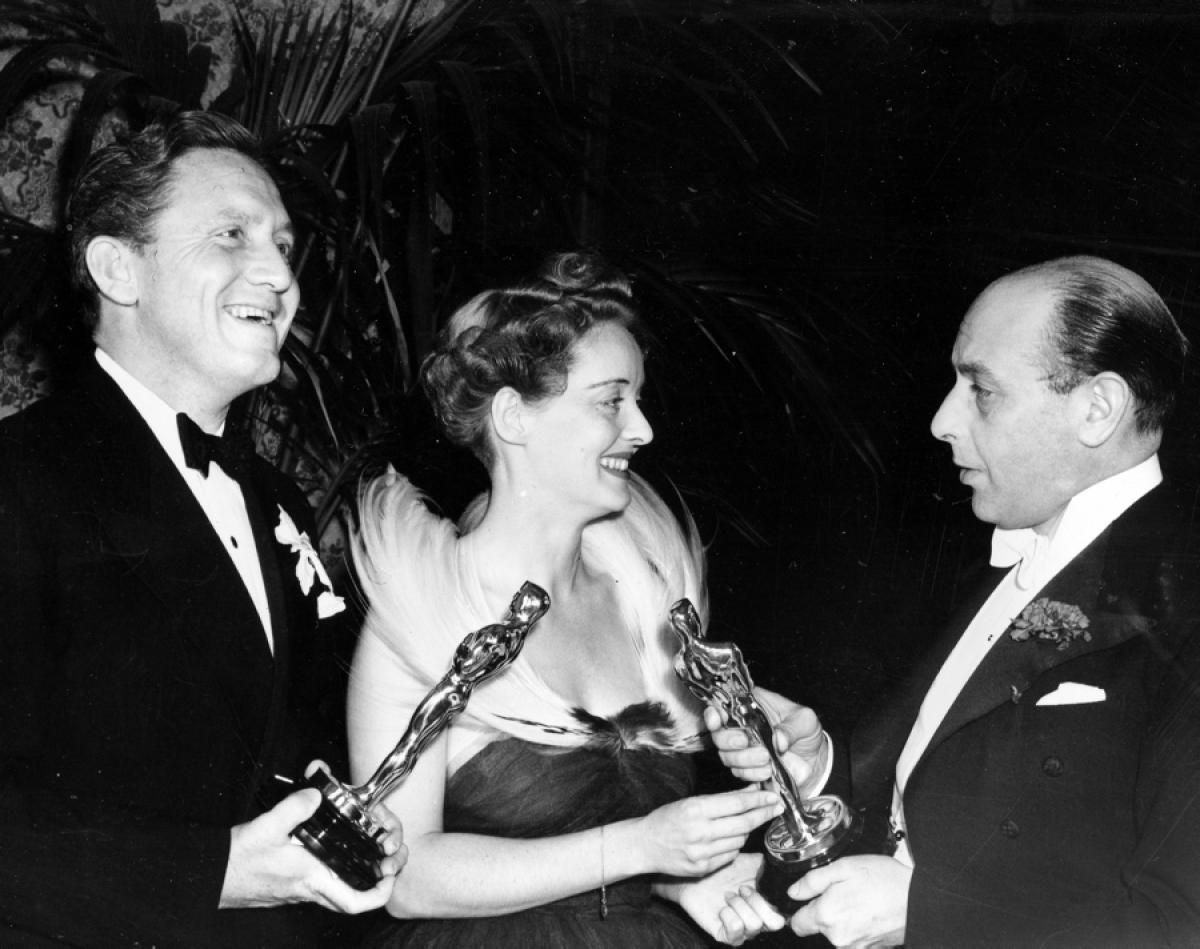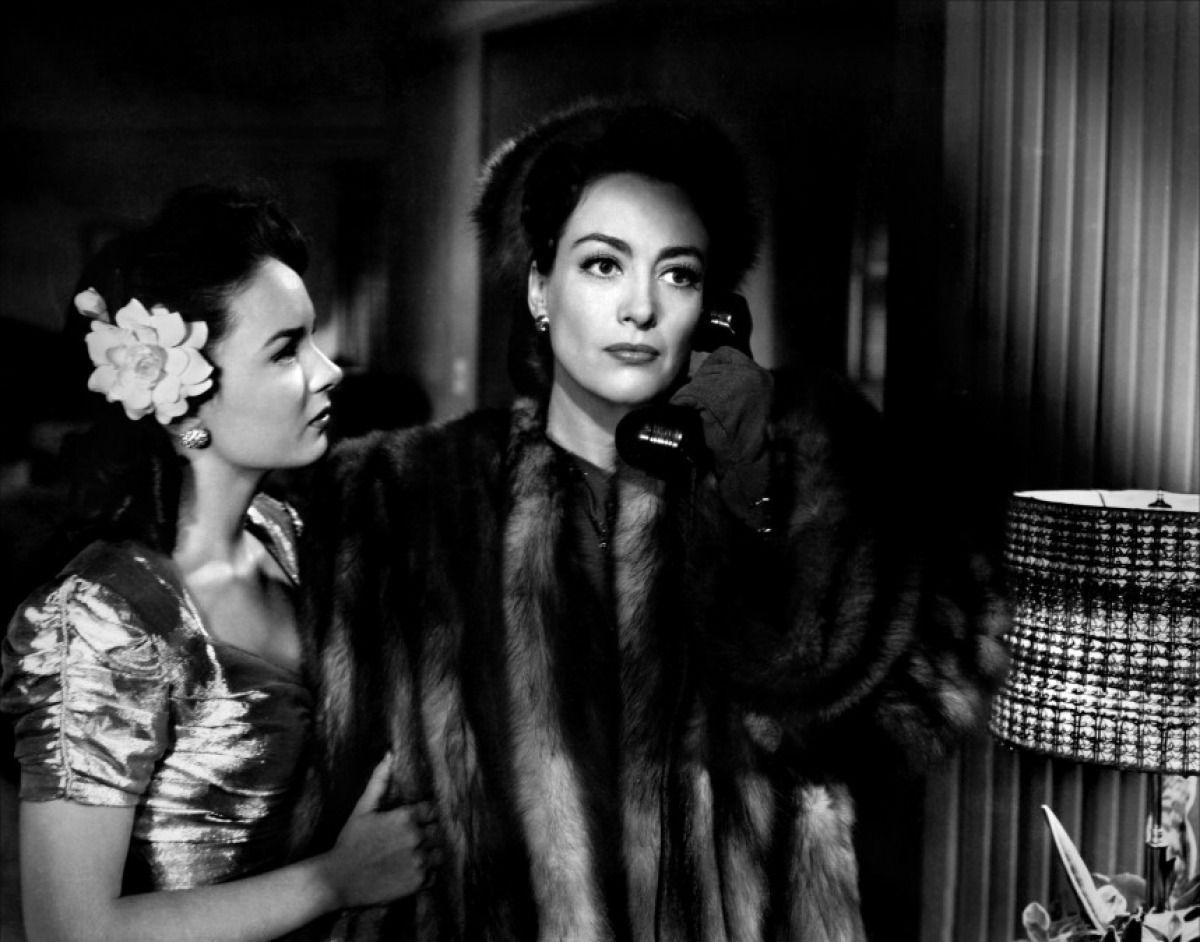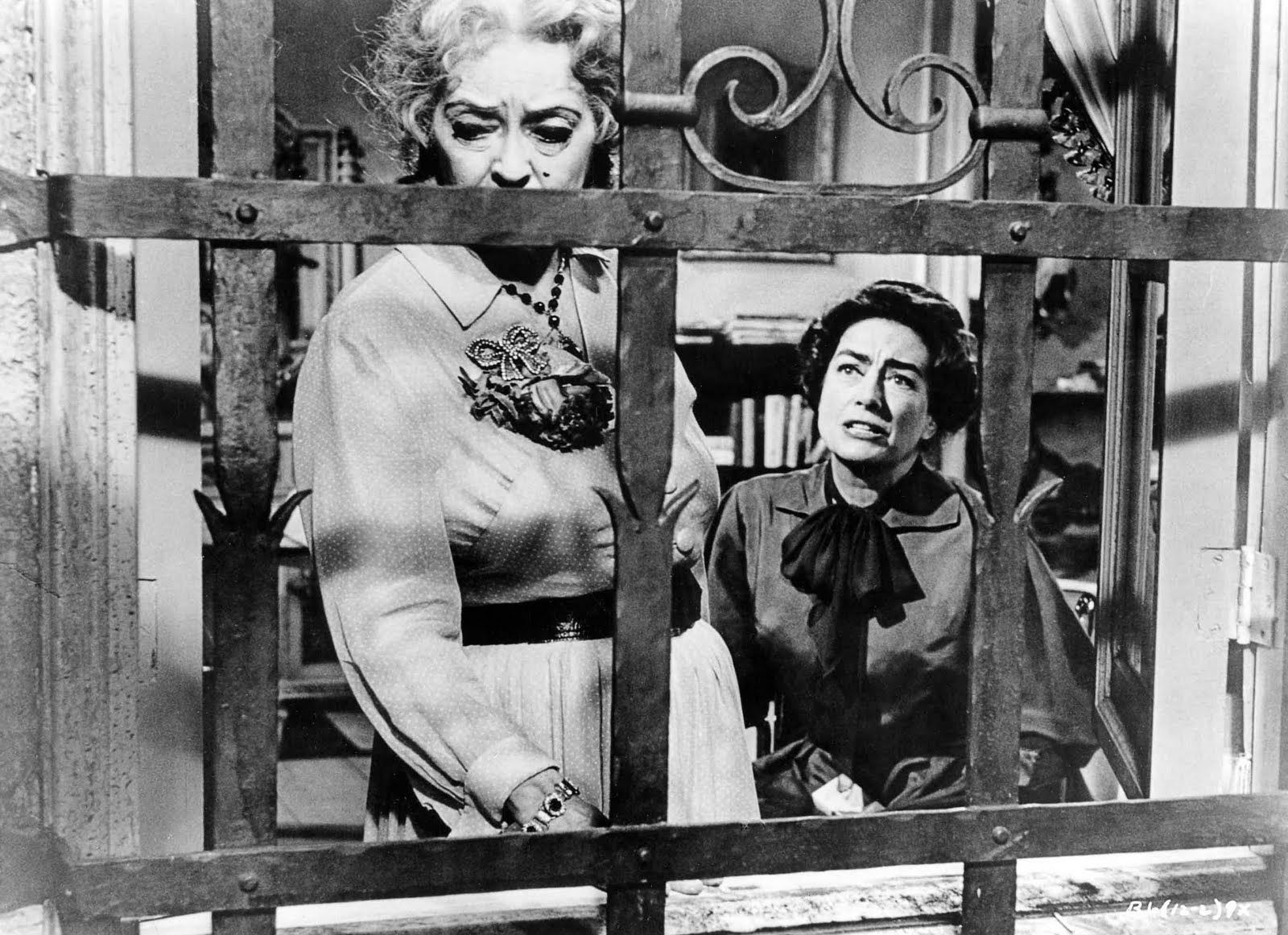Feud, FX's latest drama, is pretty much the ideal material for its creator Ryan Murphy: A melodramatic celebrity catfight for the ages featuring two of the silver screen's most iconic women, played by two of its most acclaimed actresses, Susan Sarandon and Jessica Lange. If you’re a film lover, a fan of either actress, or just watch a lot of drag queens, you’ll be familiar with the legendary lifetime antipathy between Davis and Crawford, which reached its climax with their first, last, and only shared film, What Ever Happened to Baby Jane?
The camp classic helped revitalize their flagging careers and further fueled the gossip about their mutual hatred. For a generation of fans, it’s the pinnacle of both their careers, but the image of the shrieking battle overlooks decades of work, where both actresses helped to redefine what it meant to be a woman on-screen and in Hollywood.
Crawford became one of the first flapper stars of the 20s while Davis defined herself from an early stage as an actress willing to be as unsympathetic as possible in her roles. They accrued 13 Oscar nominations between them, starred in several stone-cold classics, and are the source of many a true Hollywood legend. The feud itself is one of the less interesting things about them, but it’s also a fascinating glimpse into how the film world rejected two of its biggest stars, only for them to use their own legend to rebuild their power.
By the time Bette Davis arrived in Hollywood in 1930, following a stint on Broadway, Joan Crawford was already a star. After throwing herself into a major self-promotion campaign to build up her star image, Crawford became one of MGM's biggest stars of the silent era. She starred alongside some of the most popular actors at the studio, like John Gilbert and Lon Chaney Sr, and was launched into the A-list in the flapper-themed drama Our Dancing Daughters. The flapper was the icon of the moment, a symbol of post-Depression frivolity and beauty that began with Clara Bow, but was cemented with Crawford. Even F. Scott Fitzgerald, who spent time in Hollywood as a screenwriter, called her “the best example of the flapper.” By the end of the decade, Crawford had married Hollywood royalty, Douglas Fairbanks Jr., and made the successful transfer to talkies, which had left many a major star on the backburner.
Davis’s career took a couple more years to get off the ground. She wasn’t the classical beauty Crawford was, and was disparaged for her looks. Roles came her way infrequently but, more often than not, she struggled to be noticed by directors. That changed dramatically in 1934, when Davis was cast in the RKO adaptation of the novel Of Human Bondage. The role of Mildred, a vulgar and manipulative waitress who dies of syphilis (the film changed this to consumption to appease censors) had already been turned down by several actresses, including Katharine Hepburn, for being too unlikeable. Davis embraced the challenge, and the film was a major critical and commercial success. Her work was so acclaimed, that when she failed to be nominated for an Academy Award, the outrage was so large that it led to a change in voting procedures. Davis would eventually win her first Oscar for Dangerous in 1935, and this is believed to be where the Davis-Crawford feud began. As with many of these things, the problem was a man.
By the time Davis starred with Franchot Tone in Dangerous, he was already engaged to Crawford, after starring alongside her in Dancing Lady. They would appear in seven movies together over the course of 4 years before splitting in 1939. The marriage was tough and plagued by misfortune, as Crawford miscarried seven times. Later in life, they would reconcile as friends and Crawford would pay for Tone’s medical care when he fell on hard times, but before that, he held the attentions of another woman: Bette Davis. She admitted to falling in love with Tone on set, and feeling jealousy at his engagement with Crawford. Soon thereafter, the sniping began. Crawford said of Davis, “Miss Davis was always partial to covering up her face in motion pictures. She called it ‘art.’ Others might call it camouflage — a cover-up for the absence of any real beauty.” Davis, upping the game, said Crawford had "slept with every male star at MGM, except Lassie."
Crawford and Davis were very different actresses: Crawford was the beauty, but wasn’t taken seriously at the time as a major talent, while Davis was the acclaimed artist with range and bravery, if not the striking good looks of her contemporaries. This situation was fine for Crawford until her popularity began to wane, and in 1938 she was one of the stars dubbed “box office poison” in an infamous letter from the Independent Theatre Owners Association of America, which chastised the industry for casting highly paid stars in films audiences didn't want to see. Crawford, ever the queen of reinvention, then did well-received work against type in films like A Woman's Face, took time out to adopt children with her third husband, then volunteered her services for war work, before leaving MGM to sign with Warner Bros. -- The studio of Bette Davis.
Following a contentious lawsuit where she sued the studio for forcing her to do mediocre movies that would harm her career, then docking her pay when she turned them down (she lost), Davis found great success with Warner Bros. After winning her second Oscar for Jezebel, she starred in several financial successes and founded one of the industry's most iconic contributions to the war effort, the Hollywood Canteen. Here, some of the movie world's biggest stars would entertain serving soldiers. Everyone from Rita Hayworth to Walt Disney volunteered their services, and the canteen was such a success they turned its story into a movie, which Joan Crawford, as the studio’s latest star, cameoed in. Now, the pair weren’t just romantic rivals: They were professional ones, going after the same roles and fighting to be the studio’s top dog. When Davis turned down the lead in Mildred Pierce, Crawford fought for it, and won the Oscar for her efforts. Davis also turned down the lead in Possessed due to maternity leave, so Crawford took over again, and gained her second Oscar nomination. Both women worked steadily into the 1950s, making some true classics like All About Eve and Johnny Guitar, but Hollywood has never been gracious to ageing actresses, and soon the roles dried up for both of them.
What Ever Happened to Baby Jane? was made following the success of Alfred Hitchcock’s Psycho, which had excited audiences and critics alike. Nowadays, the film is a camp curiosity, hugely entertaining but somewhat discomfiting in how it frames these two older women as worthless hags. It’s hard to watch it and not think of the ways it mirrors how Hollywood viewed both women, having discarded them once they stopped being young and vivacious: The original flapper girl and the greatest actress of their generation, reduced to shrieking at one another over their lost youth and potential.
Both Crawford and Davis needed a hit to revive their careers, and while they held no warmth toward one another, they knew that playing on their public rivalry would entice curious viewers to the cinema to see the feud come to life. It was Crawford who asked Davis to take on the role, even going so far as to approach Davis while on Broadway performing in The Night of the Iguana to entice her. Davis agreed, and both the women and the studio knew they had a real boon on their hands.
While director Robert Aldrich commented that both women "behaved absolutely perfectly" and remained professional for shooting purposes, they still found ways to get digs at one another. Davis had a Coca-Cola machine installed in her dressing room as an insult against Crawford, who was married to the CEO of Pepsi at the time. When a scene called for Davis to drag Crawford across the floor, Crawford weighed herself down with rocks in her pockets; Davis gleefully admitted many years later that "The best time I ever had with Joan was when I pushed her down some stairs" as part of the film.
A lot of these stories are hard to verify, and there are plenty of pictures of the pair laughing together on-set and seeming generally affable in one another’s company. Of course, Davis and Crawford were otherwise only too happy to fuel the fires of their feud to the press when it helped sell the film. Audiences flocked to screenings, and What Ever Happened to Baby Jane? recouped its costs in less than two weeks. Both women saw interest in their work revived, but only Davis earned an Oscar nomination for her work. Determined to balance the scales, Crawford approached the other four women nominated in the Best Actress category that year and offered to pick up the award in their place should they be unable to attend. Anne Bancroft accepted her offer (she was performing on Broadway at the time), and when her name was announced as the winner for The Miracle Worker, Crawford strode past Davis and onto the stage to pick up the Oscar. Davis knew she had been slighted, and called the behaviour “despicable,” and so the feud raged on in the press.
The pair agreed to reunite for another similar film, Hush… Hush Sweet Charlotte, but the tension became too difficult, and after less than two weeks of filming, Crawford dropped out of the film, citing illness. Allegedly, Crawford had told others she was feigning sickness to get out of working with Davis again, having still felt slighted by Davis upstaging her in Baby Jane. Crawford refuted this claim and said she was genuinely heartbroken to have been replaced on the film (Davis's friend Olivia De Havilland took over -- Olivia was also one half of another of Hollywood's great feuds, this one with her sister, Joan Fontaine).
The feud continued through sporadic bickering in the press after that, but it was Davis who got in the last dig, upon news of Crawford’s death in 1977, reportedly saying, “You should never say bad things about the dead, only good. Joan Crawford is dead. Good.”
While Feud has been positively received by critics and looks set to revive many a drag queen revue of Baby Jane's antics, it's worth remembering the women behind the legend, and the ways in which they regenerated Hollywood, cinematic portrayals of women, and their own images. When the industry considered them too old to be of any use, they managed to put aside their mutual hatred and seize a rare opportunity to turn their fortunes. In her autobiography, Davis praised Crawford for giving her the opportunity to do Baby Jane. Whether or not the loathing was real, Crawford and Davis were smart enough to know what the public wanted to see, and gave it to them in spades.
Next: Feud: Bette and Joan Is More Than Just A Celebrity Rivalry
Feud continues Sunday night with 'The Other Woman' @10pm on FX.

